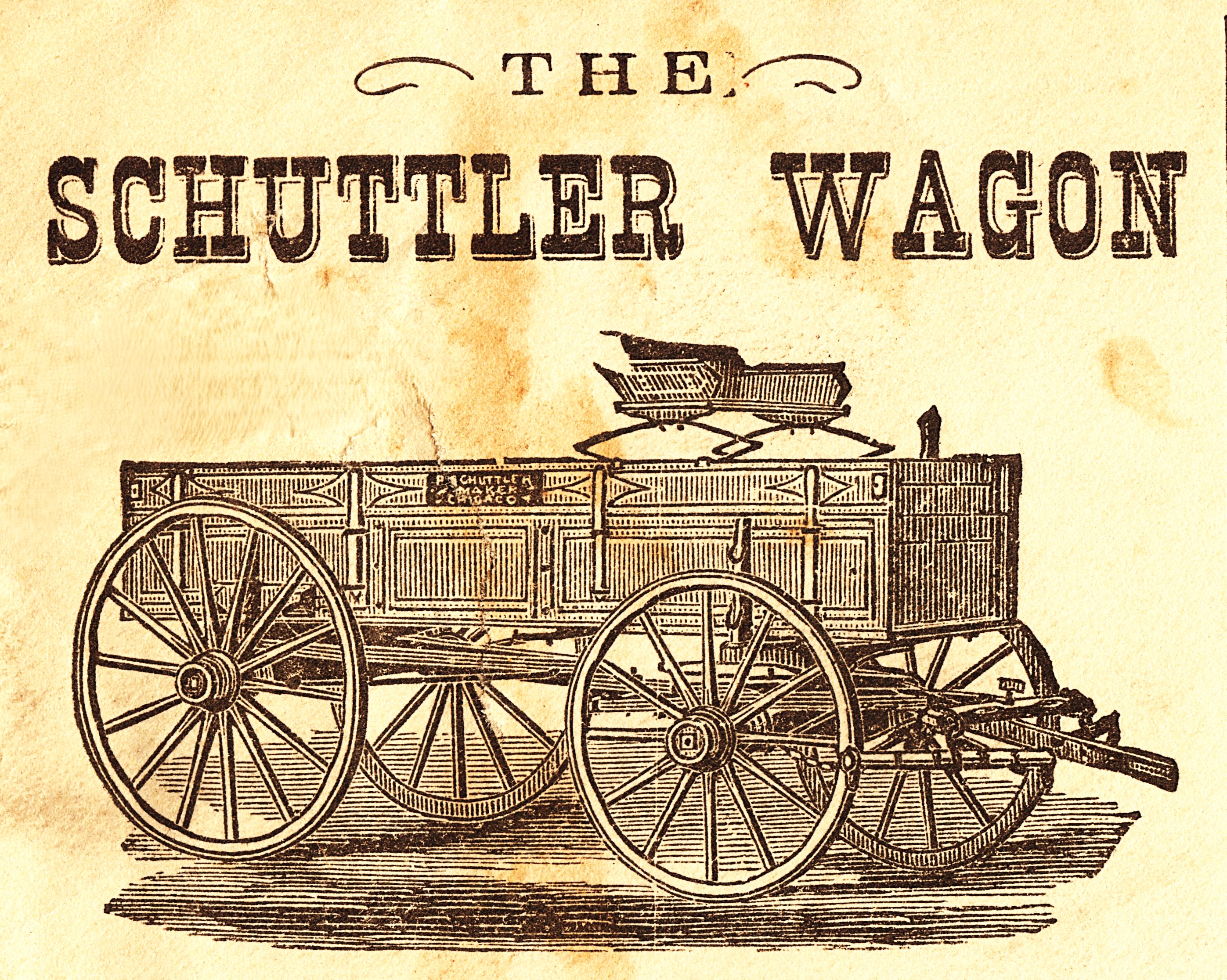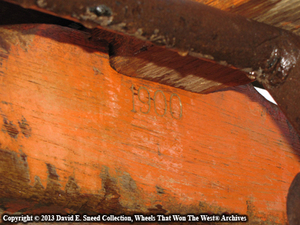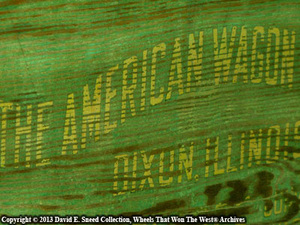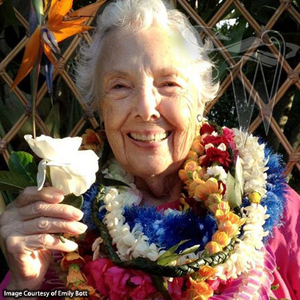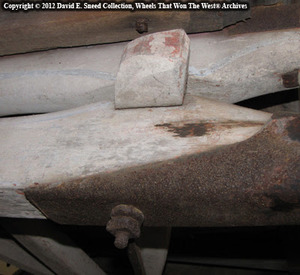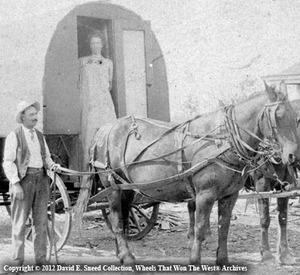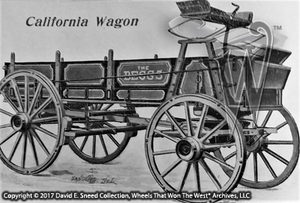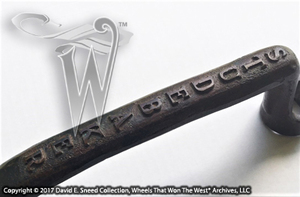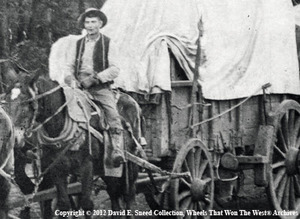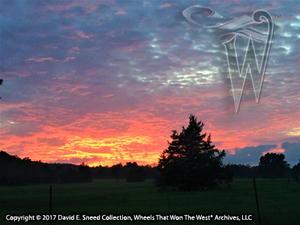Looking back to another time is what historians do. With that in mind, I thought we'd occasionally dig through our archives and uncover some of our previous writings. A full decade ago, on December 10, 2014, I posted the blog below. It covers some interesting history and showcases the perceptions of many wagon brands during the 1870's. These kinds of details are important for collectors and western enthusiasts as it helps draw us closer to the way things were; which is not always the way we assume it was. With that said, here's a story about wagons in the American West during the days of the great cattle drives, fence cutting wars, frontier wars, and other conflicts, hardships, triumphs, and showdowns...
From time to time, I'm asked, "Who were the leading wagon makers back-in-the-day?" It's a great question but like so many other queries, there are some caveats. The answer depends a lot on what timeframe you're looking at. Wagon companies, like countless establishments today, could experience significant fluctuations in business, both positive and negative. While many benefited from steady growth, challenges to progress could easily be inflicted by sagging national or regional economies, a lack of capital to keep the brand competitive, lawsuits, poor management, workforce issues, raw material shortages, or weak distribution channels. Even natural disasters such as fires, storms, and floods often created huge setbacks for firms. As a result,some of the premier brands could occasionally be seen rotating in and out of market dominance.
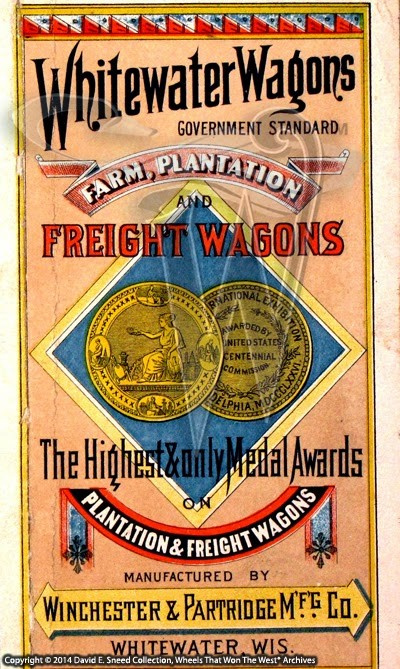
This extremely rare promotional brochure was distributed during the 1880's. It goes to great lengths to describe the superior features of the 'Whitewater' wagon made by the Winchester & Partridge Mfg. Co.
With those thoughts in mind, not long ago, I was fortunate to uncover a number of rare insights into the vehicle makers producing the most western wagons in the late 1870's. The primary source account highlights nearly two dozen of the top farm wagon companies in the West. It's such ascarce find that it's possible this blog post marks the first time the details have been shared with any modern day audience. The piece appeared in the June 1, 1879 issue of "The Hub," a well-known and highly-respected voice for the early wagon and carriage industry. While the story was primarily focused on producers of farm wagons, it's interesting to note that most of these firms also built freight wagons. I've reproduced the text from the article below. Please note, for greater separation and clarity, I placed hyphens between the individual makers...
"The Farm Wagons Built In The West annually aggregate upwards of 125,000. The leading houses which make a specialty of wagons for farm purposes are the following: Mitchell, Lewis & Co. - Fish Bros. - and the Racine Carriage & Wagon Co., in Racine, Wis. - Edward Bain, Kenosha, Wis. - LaBelle Wagon Works (B.F. Moore) Fon du Lac, Wis. - The Winchester & Partridge Mfg. Co., Whitewater, Wis. - The Northwestern Furniture Co., Fort Atkinson, Wis., who have recently extended their business and added farm wagon work to their previous specialty of furniture. - Studebaker Bros. Mfg. Co. and A. Coquillard, South Bend, Ind. - Milburn Wagon Co., Toledo, O. - Robinson Wagon Co., Cincinnati, O. - Austin, Tomlinson & Webster Mfg. Co., who have two factories; one at Jackson, Mich., where they employ convict labor and build about twenty wagons a day; and the second at Moundsville, W. Va., with a product of about ten a day. - S.G. Krick, farm wagons as well as carriages, Niles, Mich. - Wm. Harrison, Grand Rapids, Mich. -Burrell Bros., wagons and carriages, Kalamazoo, Mich. - Newton & Co.,Batavia, Ill. - Moline Wagon Co., Moline, Ill. - Peter Schuttler, Chicago, Ill.- A.A. Cooper, Dubuque, Iowa. - Star Wagon Co., Cedar Rapids, Iowa. - Kansas Mfg. Co., Leavenworth, Kas. Judging by the reports of the proprietors of the twenty-two factories named above, the product of these alone, during the year 1878 was 104,000 farm wagons. This fact gives a slight glimpse of the magnitude of the great West, and of its wonderful growth both in agriculture and manufacturing."
Of course, the information in the article is only a snapshot of this particular time in the late 1870's. Nonetheless, it does provide us with better awareness of production numbers and wagon makers considered to be prominent on the plains and frontier during the era. Clearly, there are some builders given high accolades today that are not included in this listing. It's quite likely that, in most cases, the firm had either (a) already peaked and was in decline, (b) was in a momentary production lull, or (c) had yet to achieve its full, legendary status.
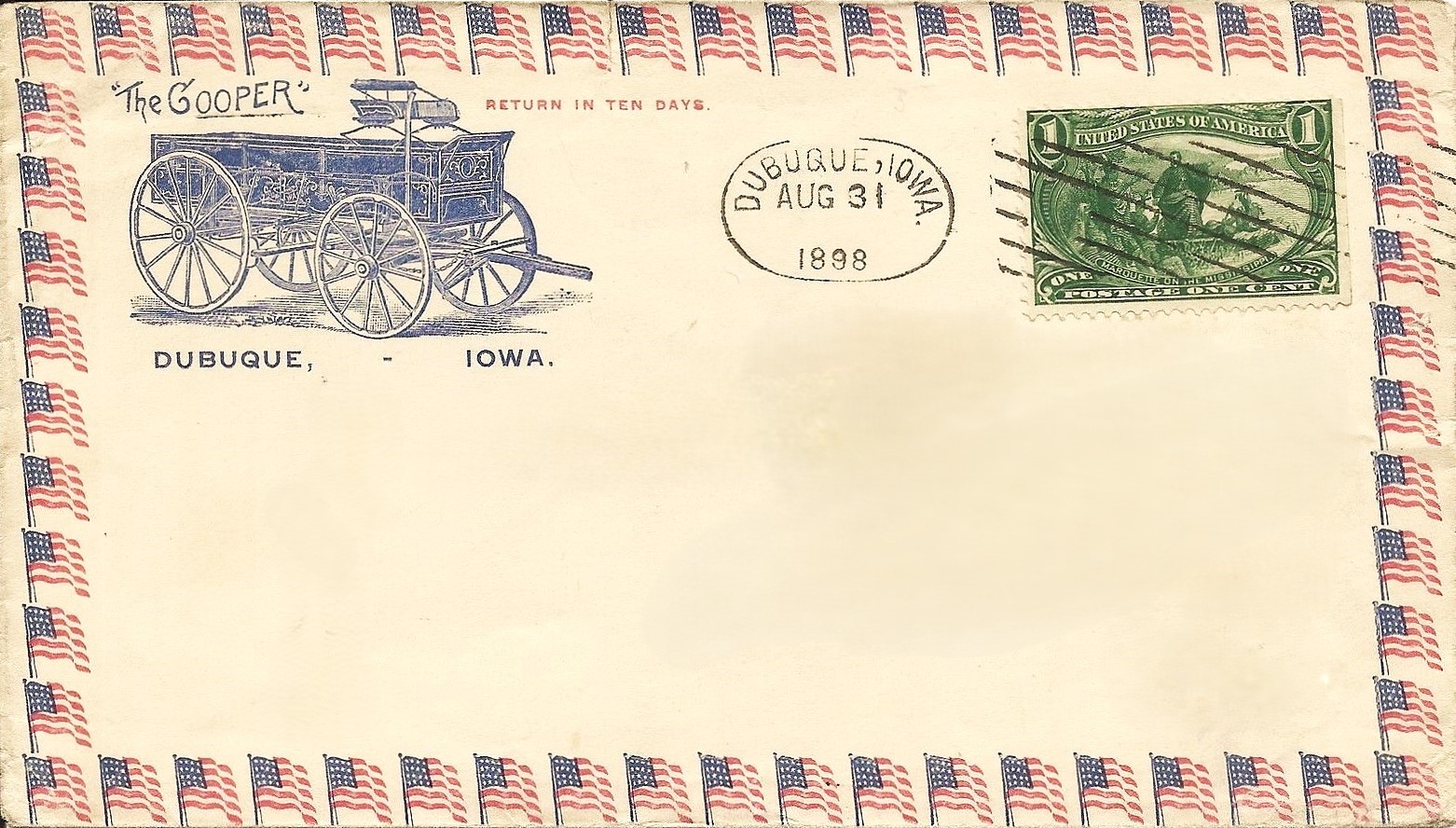
Cooper wagons were made in Dubuque, Iowa. The firm will forever be tied to the founder, Augustine Cooper's 75-year history of wagon-making.
As home to so much western vehicle history, we're pleased to share that the Wheels That Won The West® Archives contain period literature and imagery of virtually all of the builders listed in this article. While a few of the aforementioned brands are largely unknown to enthusiasts today, they were clearly popular brands and active leaders during some of the most historic days of the Old West. If you own or know of the whereabouts of one of these early brands, we'd love to hear from you. It would be an honor to help profile as many of these special survivors as possible.
Psalms 20:7
